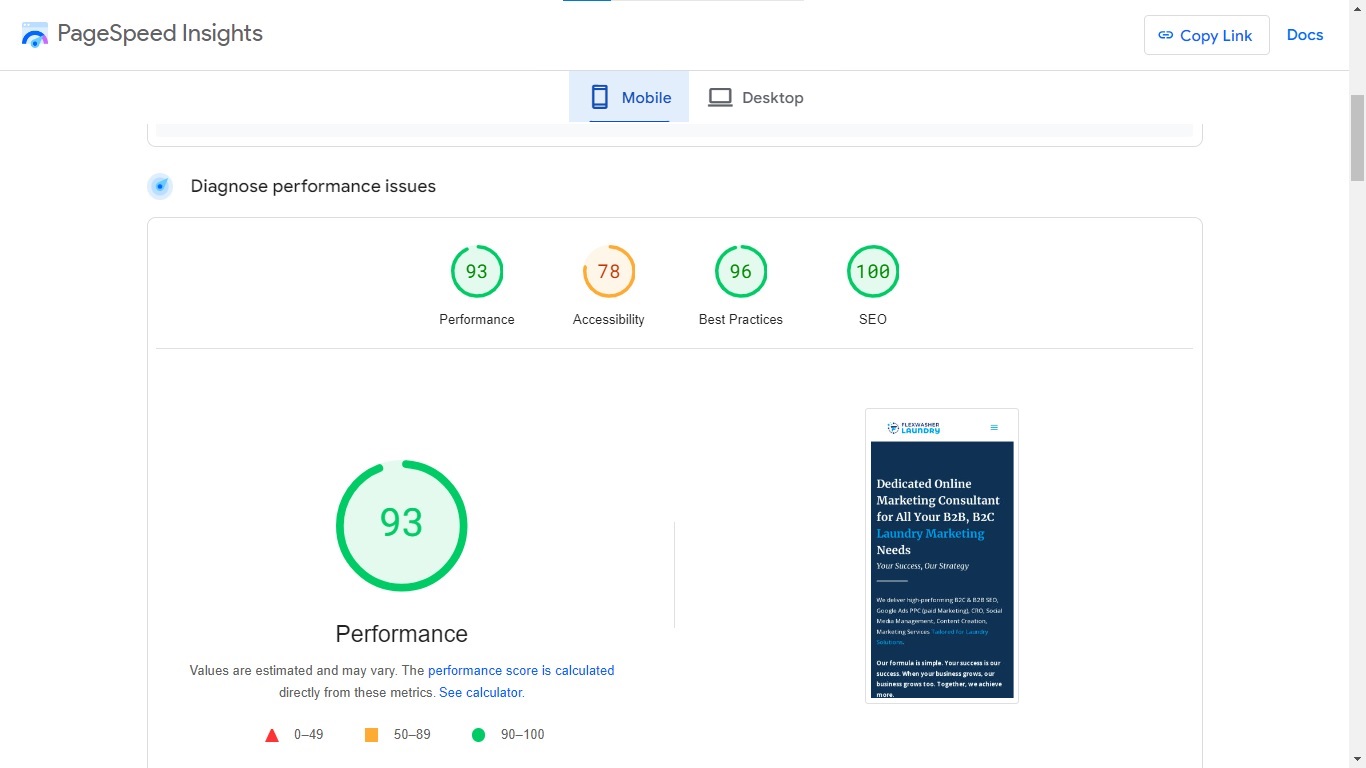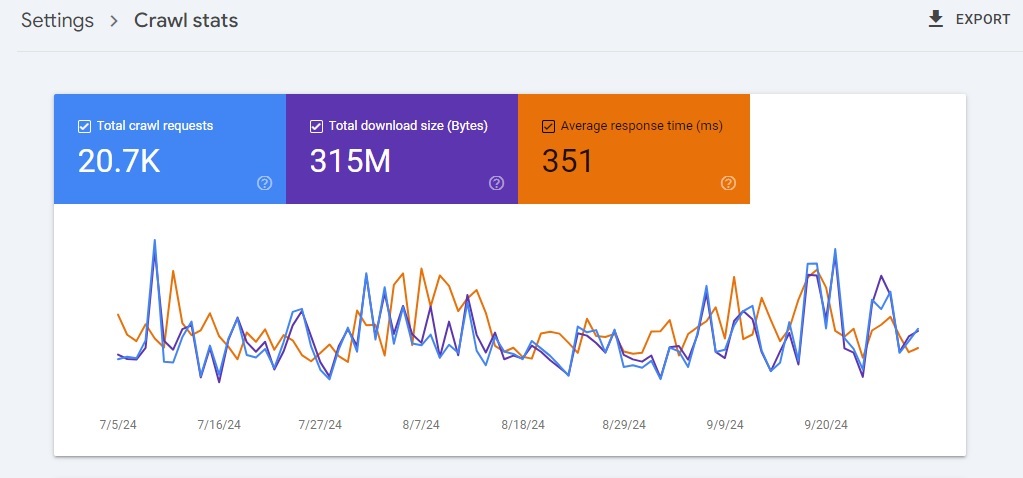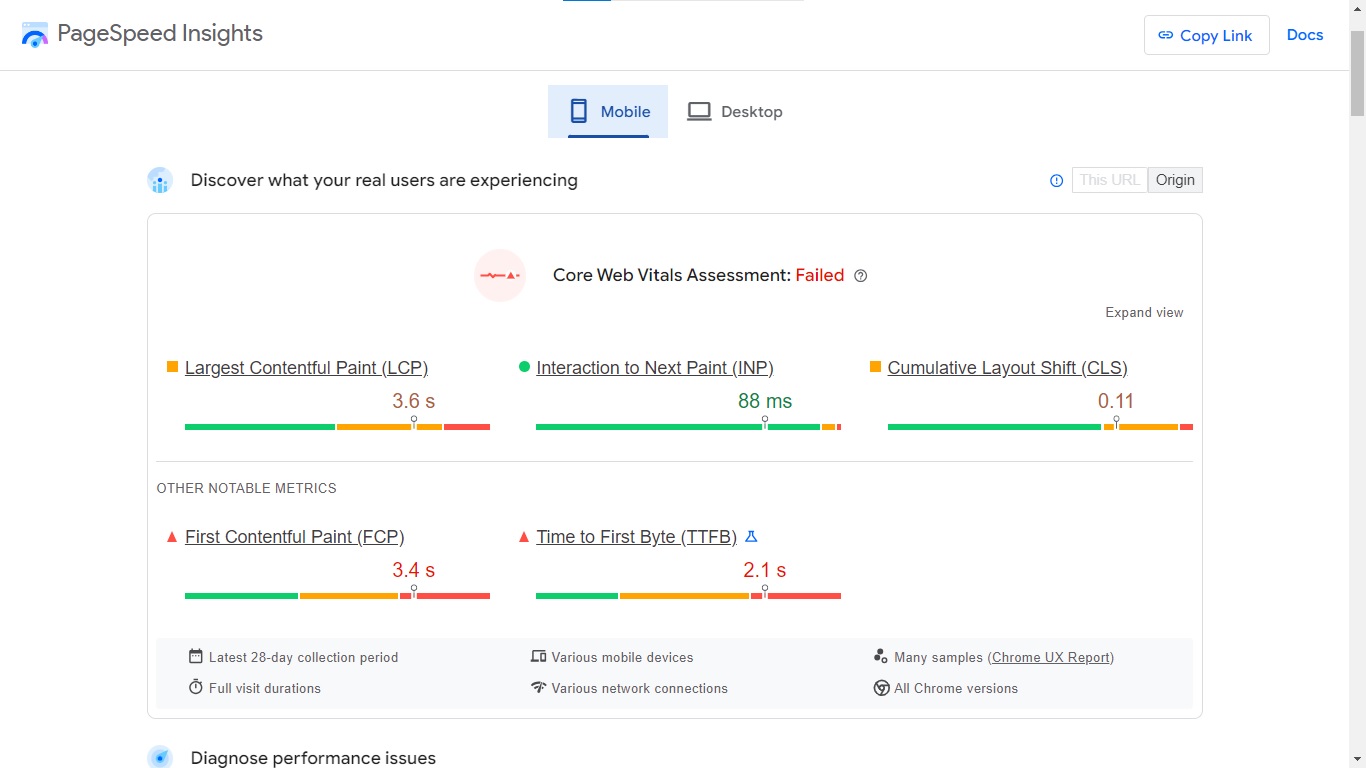With more people using mobile devices than desktops to browse the internet, Google now prioritizes the mobile version of your site for ranking and indexing. If your website isn’t optimized for mobile, it’s at a higher risk of being ranked lower.
This article explains why mobile-first indexing is important and how to optimize for it, ensuring your laundry business website stays competitive.
Why Mobile-First Indexing is Important
1. Mobile Usage Has Surpassed Desktop
Over half of global internet traffic comes from mobile devices. Google’s move to mobile-first indexing reflects this shift, making mobile site optimization essential for businesses.
If your site isn’t mobile-friendly, you risk losing out on a large audience.
2. Google Prioritizes User Experience
Google is all about providing users with the best experience. A poorly optimized mobile website leads to bad user experiences, like slow load times and difficult navigation. This directly affects your SEO ranking.
3. SEO Rankings Are Based on Mobile Versions
Google primarily uses the mobile version of your website for indexing. If your mobile site is lacking content, slow, or hard to navigate, your overall SEO performance will suffer, affecting your visibility in search results.

How to Optimize for Mobile-First Indexing: A Comprehensive Guide for Laundry and Cleaning Services Websites
As Google has transitioned to mobile-first indexing, businesses, especially those in the laundry and cleaning services industry, need to optimize their websites for mobile to maintain and grow their online presence.
Mobile-first indexing means that Google predominantly uses the mobile version of your website for ranking and indexing. If your site isn’t mobile-optimized, you risk losing visibility, traffic, and, ultimately, potential customers.
Here’s a step-by-step guide to help you optimize your laundry and cleaning services website for mobile-first indexing and improve your SEO efficiency:
1. Responsive Design: A Non-Negotiable
Responsive design ensures that your website adjusts seamlessly to any screen size, whether it’s a desktop, tablet, or smartphone.
Google recommends responsive design because it uses the same URL for both mobile and desktop versions, making it easier for Google to crawl and index your content.
Steps to Implement:
- Use media queries in your CSS to ensure layout flexibility across devices.
- Prioritize fluid grids that allow elements to resize depending on screen width.
- Ensure that images, text, and navigation menus adjust dynamically to smaller screen sizes.
Why it matters: A responsive website will keep visitors engaged, reducing bounce rates, and improving your mobile search rankings.
2. Optimize for Speed: Faster Sites Win
In the laundry services industry, your customers expect fast-loading websites, especially when they’re searching on mobile.
A delay of even a few seconds could cause users to abandon your site, hurting your engagement metrics and, consequently, your rankings.
Steps to Implement:
- Compress images to reduce load time. Use formats like WebP to maintain quality with smaller file sizes.
- Minimize CSS and JavaScript files by eliminating unnecessary characters and comments.
- Leverage browser caching to store data locally, reducing the need to reload the entire page.
- Use a content delivery network (CDN) to distribute content faster based on the user’s location.
Why it matters: A faster site improves the First Contentful Paint (FCP) and overall user experience, which Google rewards with better rankings.
3. Mobile-Optimized Content: Tailored for Small Screens
Ensure that the content on your website, including text, images, and calls-to-action (CTAs), is designed to be engaging and easy to read on smaller screens.
Steps to Implement:
- Use short paragraphs and bullet points to improve readability on mobile devices.
- Keep your font sizes legible, with a minimum of 16px for body text.
- Ensure CTAs like “Book a Laundry Service” or “Contact Us” are easy to click on mobile screens (minimum touch target size of 48×48 pixels).
Why it matters: Optimized content keeps users on your page longer, increasing the chance of conversions and improving dwell time—both critical for SEO success. What is Technical SEO? Complete Guide for Laundry Website
4. Eliminate Render-Blocking Resources: Enhance Above-the-Fold Content
Ensure that crucial content (like the booking form or contact information) loads quickly and isn’t delayed by scripts or stylesheets.
Steps to Implement:
- Defer loading of JavaScript that isn’t immediately necessary.
- Prioritize critical CSS that loads above-the-fold content first, allowing users to interact with the site while other resources are still loading.
Why it matters: Immediate engagement with your site is key to retaining mobile users and reducing bounce rates.
Download Your Free
Complete Local SEO Strategy
Download our comprehensive Local SEO Strategy designed exclusively for Laundry Solutions and Business! Discover the proven tactics to boost your online visibility, Grow Revenue and Get more local customers from search engines for FREE
5. Use Image and Post Sitemaps
To ensure that Google properly indexes your images and content, create image sitemaps and post sitemaps.
These sitemaps help Google discover important visuals like before-and-after images of cleaned clothes, service-related images, and blog posts.
Steps to Implement:
- Create an XML sitemap specifically for images, making it easier for Google to find and index them.
- Ensure your post sitemap includes all your content, such as blogs about laundry tips, cleaning hacks, and eco-friendly practices.
Why it matters: Proper indexing of images and posts ensures your rich content, which helps drive traffic, is discoverable by search engines.
6. Improve User Experience (UX) for Mobile Users
A smooth and easy-to-navigate website is crucial for keeping visitors engaged.
Google places a lot of importance on UX, especially on mobile, where users are more likely to leave if the experience is frustrating.
Steps to Implement:
- Simplify your navigation menus for mobile users. Use collapsible menus (hamburger menus) that are easy to access but don’t take up valuable screen space.
- Make forms shorter and easier to fill out on mobile devices, particularly your booking forms or contact forms.
- Ensure your buttons and touch elements are large enough to be easily tapped without accidentally clicking on other elements.
Why it matters: Improved UX will lead to higher conversion rates, lower bounce rates, and better user retention, all of which signal to Google that your site offers value to visitors.
7. Optimize for Local SEO: Mobile and Local Go Hand-in-Hand
For laundry and cleaning service providers, local search visibility is crucial since most customers will be looking for services nearby. Optimizing your site for mobile-first indexing should also include a focus on local SEO.
Steps to Implement:
- Ensure your Google My Business profile is fully optimized and up to date with your location, services, and contact information.
- Use location-based keywords throughout your site, especially on service pages and blogs.
- Make sure your NAP (Name, Address, Phone) is consistent across all platforms and easily accessible on your mobile site.
Why it matters: Local searches are predominantly mobile, so optimizing for both mobile and local ensures that nearby customers find you when they need you most.
8. Utilize Lazy-Loading for Images and Videos
Instead of loading all images and videos at once, use lazy-loading to improve page speed. This technique delays loading non-essential media until the user scrolls to the relevant part of the page.
Steps to Implement:
- Use HTML5’s
loading="lazy"attribute for images. - For videos, use tools like YouTube’s lazy load or JavaScript-based lazy-loading plugins.
Why it matters: Lazy-loading reduces the initial load time, leading to a smoother experience for users, especially on slower mobile networks. Laundry Website’s Full Potential with Complete SEO Strategies
9. Test on Multiple Devices and Browsers
It’s essential to test your mobile site’s performance across different devices (Android, iOS, tablets) and browsers (Chrome, Safari, Firefox) to ensure consistency.
Steps to Implement:
- Use tools like Google’s Mobile-Friendly Test to analyze how your website performs on different devices.
- Regularly perform cross-browser testing to identify any rendering issues.
Why it matters: Ensuring your mobile site functions smoothly across all platforms guarantees a consistent experience for all users, no matter how they access your site.
Download Your Free
Digital Marketing Plan Template
Build a practical, strategic marketing plan that generates more web traffic, leads and Conversions. Reach Your Target Audience Where They Are and Drive Sales Like Never Before
Is Your Website Ready for Mobile-First Indexing? The Cost of Doing Nothing Is Too High
Imagine this: potential customers are visiting your website every day on their phones. They’re looking for your services, excited to learn more.
But your site is slow, clunky, and hard to navigate. They click away within seconds. Each of those missed opportunities is a lost customer, a lost sale.
This is what happens when you don’t optimize for Mobile-First Indexing. Your business starts bleeding traffic.
You’re not just losing rankings, you’re losing credibility, trust, and money—right now, at this very moment.
The Pain of Lost Opportunity
If you’re not adapting to mobile-first indexing, you’re handing over your customers to the competition.
How many more missed leads can your business endure before it becomes critical? Don’t wait until your site is buried so deep in the rankings that no one can find you.
The cost of inaction isn’t just lost traffic—it’s lost revenue, lost growth, and lost trust from your target audience.
Time Is Running Out—Don’t Risk More Losses
You can sit back and watch your rankings sink further each day, or you can take action right now. You’ve already lost enough. Let’s make sure you stop the bleeding and get your website in front of the customers who need your services.
If you’re ready to stop losing out on business and start winning again, reach out to me today. You can email me 

Also Recommended to Read:
SEO Strategy for Driving Traffic
Optimizing Laundry Website for Google SGE Ranking
Optimize Your Laundry and Dry Cleaning Business Website for Google SGE
SEO Ranking Strategies to Google Search Generative Experience (SGE) Snippet
Why Should Your Laundry Website be Optimized for Google SGE
Advanced Mobile-First Indexing Tips
Minimize JavaScript Conflicts
Avoid JavaScript rendering issues that can slow down your site or prevent indexing. If JavaScript is critical, ensure it doesn’t block content from loading or delay rendering.
Dynamic rendering or server-side rendering (SSR) can help reduce these issues. important Google Algorithm Updates you should know.
Focus on First Contentful Paint (FCP)
FCP is the time it takes for the first piece of content to appear on a user’s screen. Google uses FCP as a ranking factor.
To improve FCP, optimize server response times, remove unnecessary plugins, and enable browser caching. How to perform Crawl Budget Optimization
Why Your Laundry Business Needs Mobile-First Indexing
For laundry service or business website owners, mobile-first indexing ensures that potential customers can easily find and navigate your services on mobile devices.
Boost Your Brand with Tailored Content Creation for Blogs and Social Media
Optimizing your site will not only improve your SEO rankings but also enhance user experience, leading to higher conversions.
Key Takeaways
- Mobile-first indexing is essential as Google now prioritizes mobile sites for ranking.
- Improve speed, navigation, and user experience on mobile.
- Test your site on various mobile devices to ensure it’s fully optimized.
- Use responsive design, optimize images, and focus on key content “above the fold.”
If your website isn’t fully optimized for mobile-first indexing, you’re losing out on potential traffic and sales.
A Technical SEO Audit can help identify and resolve any issues hindering your site’s performance.
You can also hire a technical SEO expert to ensure your mobile site is fast, responsive, and fully compliant with Google’s guidelines.
Promote Your Laundry Business Online with Proven Online Marketing Strategies!
Unlock the Secrets of Google Ranking Optimization Strategies , Fast-Track Your Laundry Business Success with Mastermind Mr. Ram
Related Articles
Boost your Website Ranking with Best Google SGE Optimization Services
As Google shifts towards AI-powered search results with its Search Generative Experience (SGE), the way businesses rank online is changing. No longer...
Boost Your Laundry and Dry Clean Service Website’s Visibility with Schema Markup
Running a laundry and dry cleaning service in today’s fast-paced digital world is about more than just offering great service and competitive pricing....
How to Rank Your Laundry Website on Google’s First Page Using White-Hat SEO Techniques to Increase Online Presence
Now a days securing a top spot on Google’s first page can be the difference between getting noticed or getting lost in the competition. For laundry...
Unlock the Power of Performance Max for Your Laundry, Dry Cleaning Business
Performance Max (PMax) campaigns are a game-changer in Google Ads, allowing businesses to run ads across all Google Ads 360 from Search to YouTube...
What Is Structured Data and Why Is It Important for SEO Ranking on SERP?
Standing out online in the competitive laundry service industry can feel challenging, but structured data for SEO offers a powerful solution. Though...
Best Digital Marketing Agency Exclusively for Laundry Businesses
If you’re looking to grow your laundry business or equipment manufacturing company, choosing the right digital marketing agency is crucial. At...
